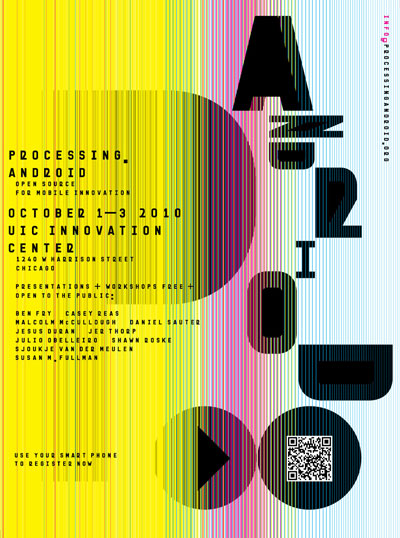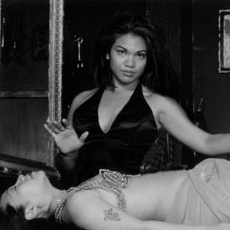Jitish Kallat’s “Public Notice 3” at the Art Institute of Chicago
By Whitney Stoepel
“We believe not only in universal toleration, but we accept all religions as true.” Swami Vivekananda, the Hindu monk and early champion of inter-faith dialogue, spoke those words in a speech given in Chicago at the Parliament of the World’s Religions on September 11, 1893 — a little over a century before the terrorist attacks on September 11, 2001. That date may be coincidental, but it serves as a poignant reminder of the continued need for that tolerance today, nine years after the attacks on the World Trade Center; and it’s certainly not a coincidence that Mumbai-based artist Jitish Kallat chose to unveil his site-specific installation, “Public Notice 3,” at The Art Institute on September 11, 2010.
Kallat’s installation displays the text from Vivekananda’s speech on the 118 risers of the Woman’s Board Grand Staircase of the museum in dazzling, multi-colored LED lights. The contrast of the staircase’s antiquated architecture with the contemporary use of technology is both arresting and beautiful, but above all, the piece is notable for its political edge. Even the choice of the colors used to depict the text is pointed (and a bit cheeky); Kallat’s red, orange, yellow, blue, and green are the same colors that the Department of Homeland Security uses for its security alert system. The work’s social critique is thus manifest in both its form and content.
The location of the installation is also key. The Art Institute was the site for Vivekananda’s above-quoted speech to an audience of 7,000 at the first World’s Parliament of Religions during the World’s Columbian Exposition. When he pleaded for an end to “sectarianism,” “bigotry,” and “fanaticism,” Vivekananda was given a standing ovation (the street in front of the Art Institute is even named “Swami Vivekananda Way”).
Kallat often incorporates notable speeches in his work. For example, “Public Notice 2” (2007) was an enormous, immersive wall installation for which the artist created thousands of fiberglass words that spelled out portions of Gandhi’s famous speech preceding the Dandi March protesting the British tax on salt in India. The first installation of the series, “Public Notice” (2003), featured five panels of mirrors that had been written upon using rubber cement, which was then burned; the resulting distorted forms spelled out Jawaharlal Nehru’s speech announcing Indian independence from Britain in 1947.
Taken together, these three works reveal a similar interest in pointing out the disparity between hopeful words or calls to action spoken at past moments of positive change, and the sober reality of the contemporary political climate. This disparity is also clear in the experience of the work, itself. Standing in front of the piece, it’s hard to capture the totality of the text; words seem to scroll up in space and disappear, like the credits in “Stars Wars.” The design forces viewers at the bottom of the stairs to squint in order to read the end of the speech at the top, ignoring the beginning of the speech that lies directly under his or her feet. The viewers are thus completely in the present, unable to capture the beginning or end of the text as they climb the stairs, suggesting the impossibility of understanding one’s present place in history, and the sensation that because of this, we are never progressing. This piece is thus an enormously successful, if somber, mile marker of mankind’s dismal progress in achieving peace and tolerance.
This point is hammered home in the media on a daily basis, such as when Florida pastor Terry Jones declared September 11 “International Burn a Koran Day,” or with the growing conflict over building a mosque at Ground Zero. Examples of extreme intolerance even occur here at the School of the Art Institute: last spring, M.F.A. student Anida Yoeu Ali’s 1700% Project — a project that explored racial profiling against Muslims post 9/11 — was shown at the M.F.A. show at the Sullivan Galleries, and was defaced shortly after the opening. Although the vandalism was never charged as a hate crime, it was still viewed by many as racially and religiously motivated. Clearly, from 108 years before 9/11, to nine years after, the problem of political, religious, and cultural intolerance is as bad as ever — if not worse.







